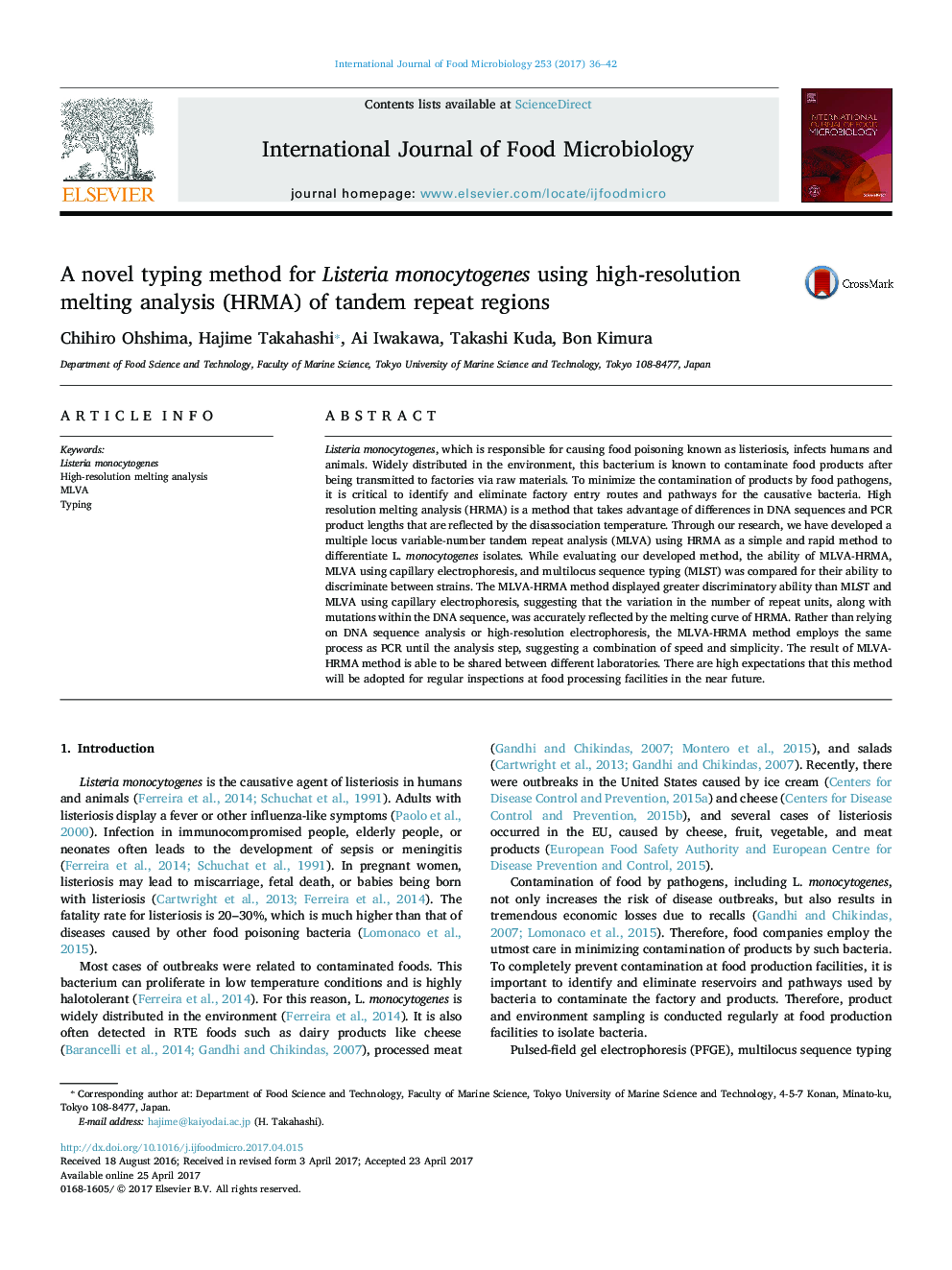| کد مقاله | کد نشریه | سال انتشار | مقاله انگلیسی | نسخه تمام متن |
|---|---|---|---|---|
| 5740760 | 1616530 | 2017 | 7 صفحه PDF | دانلود رایگان |

Highlight
- High resolution melting analysis was developed for tandem repeat regions PCR amplified from L. monocytogenes strains.
- Developed method was evaluated by comparing with other typing methods.
- The method has high discriminatory ability for L. monocytogenes strains.
Listeria monocytogenes, which is responsible for causing food poisoning known as listeriosis, infects humans and animals. Widely distributed in the environment, this bacterium is known to contaminate food products after being transmitted to factories via raw materials. To minimize the contamination of products by food pathogens, it is critical to identify and eliminate factory entry routes and pathways for the causative bacteria. High resolution melting analysis (HRMA) is a method that takes advantage of differences in DNA sequences and PCR product lengths that are reflected by the disassociation temperature. Through our research, we have developed a multiple locus variable-number tandem repeat analysis (MLVA) using HRMA as a simple and rapid method to differentiate L. monocytogenes isolates. While evaluating our developed method, the ability of MLVA-HRMA, MLVA using capillary electrophoresis, and multilocus sequence typing (MLST) was compared for their ability to discriminate between strains. The MLVA-HRMA method displayed greater discriminatory ability than MLST and MLVA using capillary electrophoresis, suggesting that the variation in the number of repeat units, along with mutations within the DNA sequence, was accurately reflected by the melting curve of HRMA. Rather than relying on DNA sequence analysis or high-resolution electrophoresis, the MLVA-HRMA method employs the same process as PCR until the analysis step, suggesting a combination of speed and simplicity. The result of MLVA-HRMA method is able to be shared between different laboratories. There are high expectations that this method will be adopted for regular inspections at food processing facilities in the near future.
Journal: International Journal of Food Microbiology - Volume 253, 17 July 2017, Pages 36-42